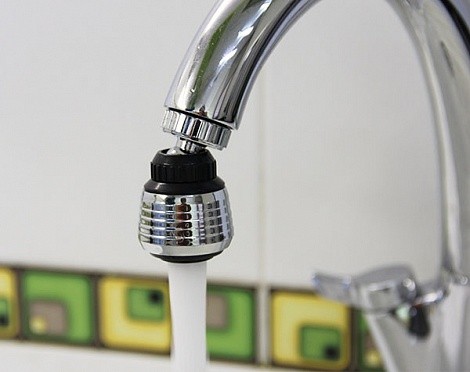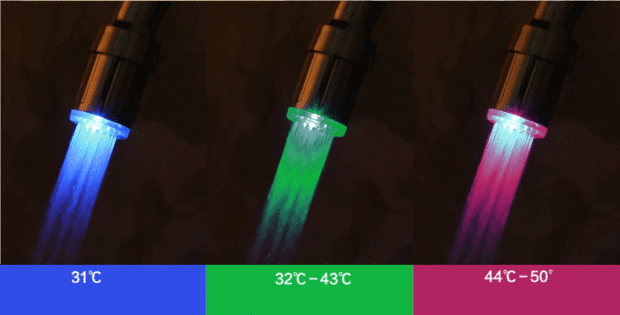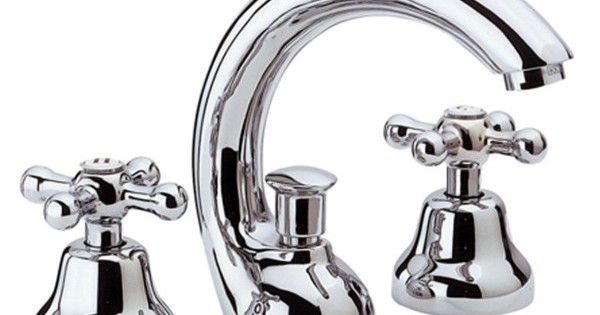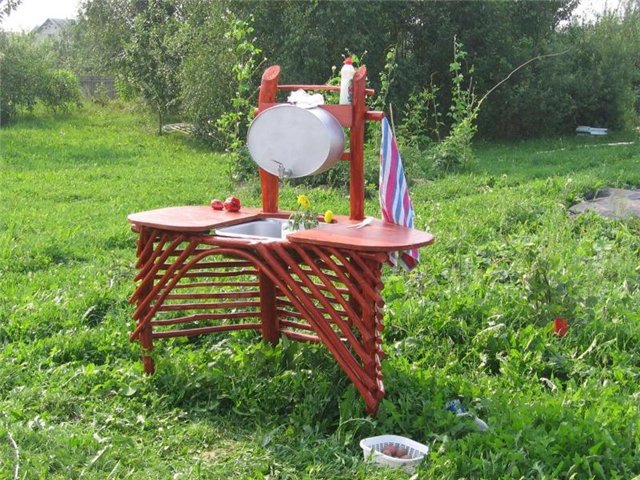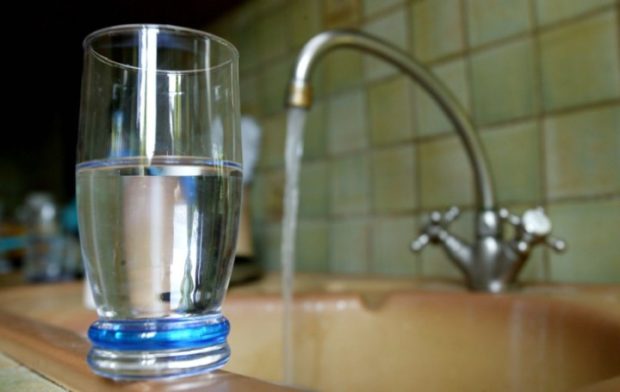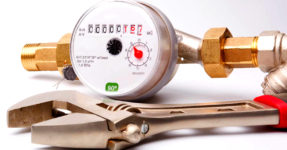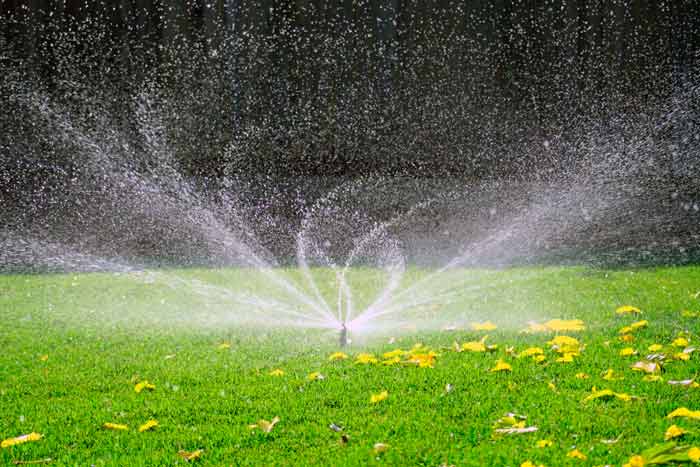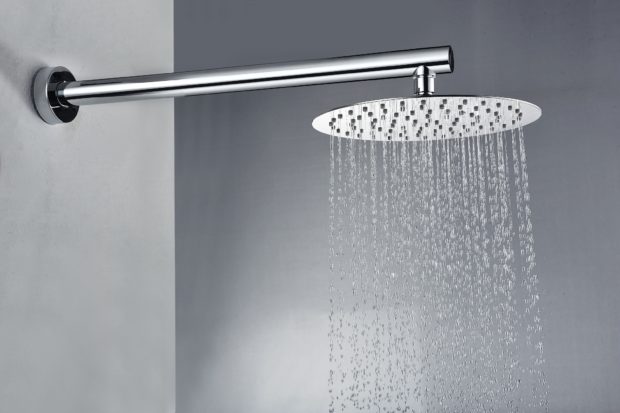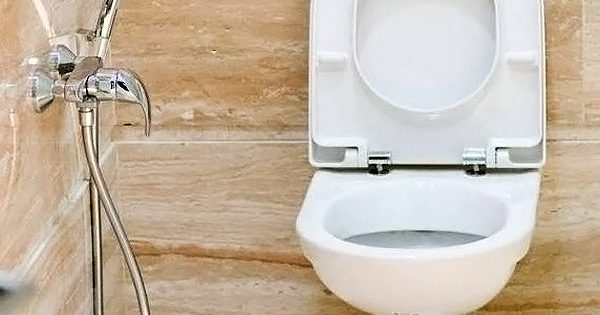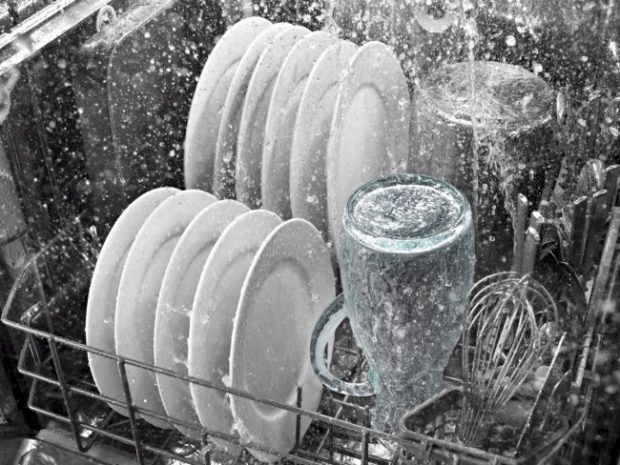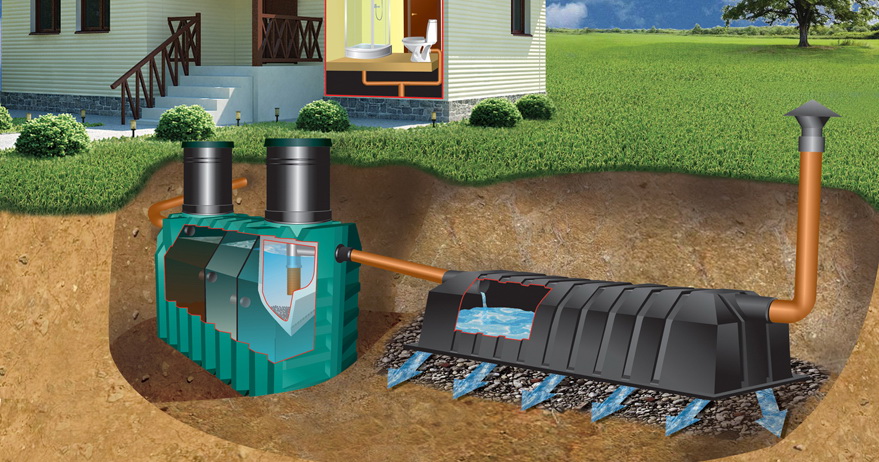Water-saving nozzles: 10 tips for choosing
The average resident of Western Europe consumes about 230 liters of water per day, and the average resident of Moscow - 350 liters. Are Europeans less likely to go to the shower and wash the dishes? No, the thing is that they know how to save water without causing damage to their own comfort. To significantly reduce water consumption, you can use special water-saving nozzles for mixers and shower heads. They will reduce water consumption by 20-70%, and this is not magic at all, but elementary physics. If a few years ago the effectiveness of water-saving nozzles was in question due to the many cheap devices in the plumbing market that did not justify their purpose, today the situation has changed dramatically. There are plenty of quality nozzles in the stores - all that remains is to learn how to make the right choice.
No. 1. The principle of operation of water-saving nozzles
Each of us at least once held a hose with water in our hands and knows that if you cover a hole with your finger, you can get a directed stream of water with a sufficiently strong pressure. If you release your finger, then the throughput will increase, and the pressure will decrease. Similarly work simplest water limiters. Such equipment appeared relatively long ago, but it did not take root in apartments, since along with consumption the water pressure also fell, which is inconvenient.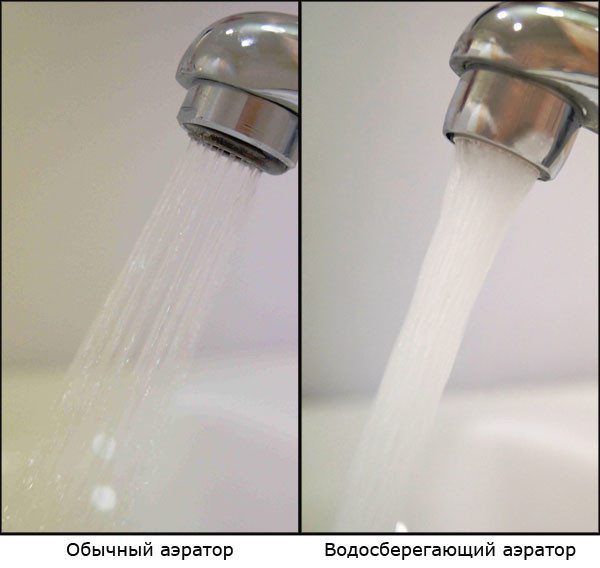
Today, when it comes to water-saving nozzles, implied nozzles-aerators. Water passing through it breaks up into many thin jets and is saturated with air, and at the outlet a solid soft stream is obtained. The amount of water in it is almost two times lower than in a faucet without a water-saving nozzle, but it is impossible to feel it - the flow remains comfortable for carrying out hygiene procedures and washing dishes. This is due to increased pressure and increased water volume with air bubbles. The user does not feel a decrease in water pressure, but at the same time, each time including water, he saves on utility bills. However, there are nozzles that simply break the flow of water, but do not saturate it with air.
The nozzle has a fairly small size, in shape resembles a cap that is screwed to the spout mixer. Inside it has several nets, and sometimes a cartridge for additional water purification. The nozzle body is made of various materials: the cheapest - plastic aerators, the most expensive and durable - ceramic, brass and bronze. The installation method of the nozzle is as simple as its principle of operation.
Water-saving nozzles will not only save water, but also reduce noise. Many people note that the water jet becomes softer and more even, and the problem of spray disappears altogether. The main thing is that such nozzles can be easily and simply installed on any crane in the apartment and at the cottage, in the hotel and office, but they are quite inexpensive.
No. 2. Type of water flow
The main element of the water-saving apparatus is the grid, the cells of which form one of three types of flow:
- with aeration. In part, it resembles soda due to the saturation of water with air bubbles. Visually, such a grid is easy to recognize - it has large cells.Even at maximum pressure, the stream will remain accurate and will not be sprayed in all directions;
- laminar is integral, not dispersed. The grid consists of small honeycombs, which, unlike the first representative, do not saturate the water flow with air;
- spray nozzles easy to recognize by holes located along the radius. Outwardly, such a stream resembles a small shower, and works on the same principle, splitting a single stream into many small ones directed separately.

Please note that the aerator reduces the throughput of the mixer from 12-18 liters per second to 5-8. This significantly affects water saving and is almost imperceptible in everyday activities (wash hands, rinse the plate). However, in case you need to pick up a bucket, it will take much more time. Bath in the evening and do have to start typing in the afternoon.
Therefore, when choosing a product, it is worth considering the following:
- to the kitchen It is worth putting laminar equipment or with aeration to avoid splashing. Spray nozzle at high position mixer will give a lot of spray
- to the bathroom An apparatus with a spray, or with a special adjustment mechanism, will do. This is a small screw that can be tightened up depending on the current needs of the consumer, increasing, or, conversely, decreasing the pressure. It is also recommended to leave one of the cranes without a nozzle.

No. 3. Nozzle material
Like any other plumbing, water-saving nozzles are in continuous contact with running water, which can have a variety of chemical impurities. The durability of the nozzle is highly dependent on the material underlying the production:
- chrome or stainless steel - One of the most versatile options. Such nozzles look aesthetically pleasing and perfect for any faucets. However, their service life is shorter than that of their analogs, since the metal quickly collapses under the influence of a liquid, and the mesh becomes clogged and contaminated;
- brass and bronze They are characterized by high resistance to destruction, and with regular cleaning of the mesh from deposits, such a nozzle will last quite a long time. The only negative is the increased cost;
- plastic nozzles easy to manufacture and little susceptible to the destructive properties of running water. They are inexpensive, and the choice is decent enough, only in terms of durability are plastic parts inferior to all competitors;
- best manifests itself ceramics, from which the internal elements of the device are made, since with proper care their service life is almost unlimited. However, this significantly affects the price - ceramic products are more expensive than all of the above.

Number 4. Type and size of thread of the nozzle
In the desire to save water, you can not lose your mind and take the first nozzle that comes across. It is important to pay attention to the type of thread, which will depend on the type of thread of the spout. Look at the spout of the tap to understand where the thread is located. If it is inside the spout, then the nozzle will screw into it and have external thread. If the tap thread is on the outside, then you will wind the nozzle, and this requires internal thread. Everything is simple - confusing something will be extremely difficult.
With thread size is still easier. For the vast majority of faucets (98%) installed in domestic apartments, threaded nozzles are suitable 22 mm and 24 mm. However, there are non-standard spouts, and if you suspect that you have just such, then it is better to double-check everything before buying. Using a caliper, ruler or tape measure, measure the diameter of the spout, or twist the factory aerator and measure its size.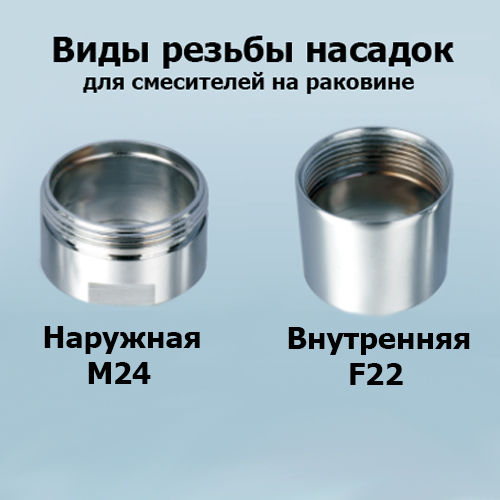
No. 5. Optimum nozzle flow rate
A conventional mixer, even if an atomizer is installed on it, produces much more water than is required by a person, from 12 to 16 l / min. Water-saving nozzles with varying degrees of comfort can reduce consumption to 1.7-8 l / min.For each point of water consumption, it is better to choose a nozzle with a certain water flow, since, for example, to wash dishes and vegetables, you need more water than to wash and brush your teeth. Therefore, when choosing a nozzle, you can be guided by the following recommendations:
- for mixer on the kitchen a nozzle is suitable, which limits the flow of water to 5-8 l / min;
- for washbasin, intended washing and fine washing, - 3-6 l / min;
- for a washstand used only for brushing, shaving and washing hands, from 1.7 l / min.
If you have a geyser installed, it is best that the flow rate in all mixers is the same. This is necessary to avoid sudden changes in temperature. In this case, the water flow should be at least 4 l / min. Some experts, by the way, call the flow of water 3-4 l / min ideal, since 2 l / min is not an option that everyone will like, but at 8 l / min the savings will not be significant.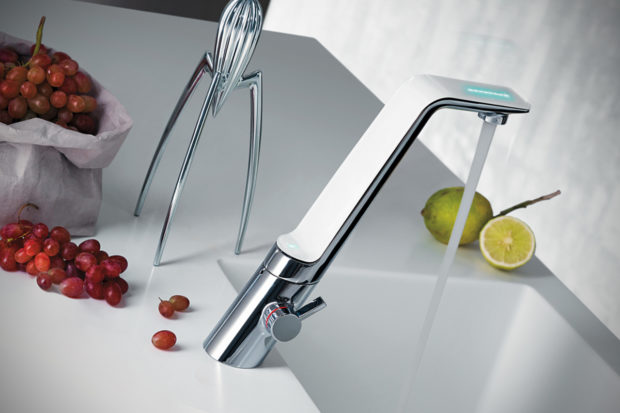
No. 6. Water flow regulation
Saving water is great until you need to quickly collect a relatively considerable amount of water. To avoid inconvenience, some mixers can even be left without nozzles. We are talking about places such as a water intake. If the flow rate of water at one point can vary significantly, it is better to use a nozzle with an adjustable flow of water. It will be indispensable for a kitchen faucet, which is used for washing dishes (low consumption is suitable) and for a set of buckets of water. Such a mixer is also suitable for bathrooms, in which one mixer is used to supply water to the sink and a bath.
Adjustable water nozzles they have a special screw on the aerator, which can be adjusted with a screwdriver or an ordinary kitchen knife, limiting the flow to 2 l / min or increasing it to 8 l / min. Such nozzles are more expensive, but versatility is evident. Products with a constant (unregulated) flow will be much cheaper and will last longer, because no one will constantly pull them.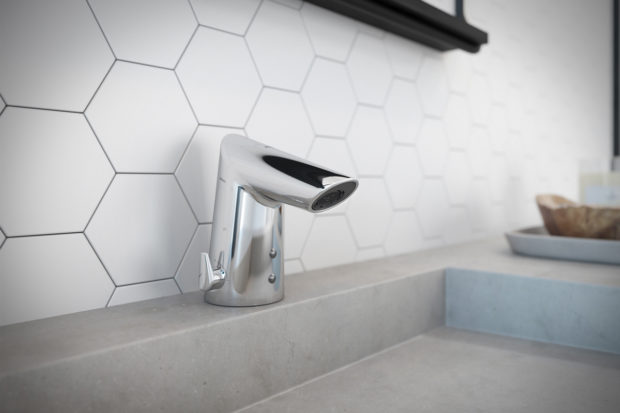
Number 7. Shower heads
In summer, fluid intake increases significantly - you have to take it much more often showerto freshen up. There are two varieties of water-saving showerheads:
- installed between the shower hose and the watering can. It regulates the pressure of water, reducing its consumption in one and a half to two times - from 12-18 liters per minute to 6-8. Such a unit can significantly save money when installed in public places - hotels, hostels, training rooms and other similar places;
- water-saving watering can works on the same principle as ordinary aerators, with the ability to adjust the type of flow. As a rule, they provide several modes that can be switched depending on current needs.
Please note that along with water-saving watering cans, there are also water-saving faucets. The necessary elements are already built into them in order to reduce the level of water consumption. The option is convenient, but more expensive compared to a conventional mixer and a separate nozzle for it.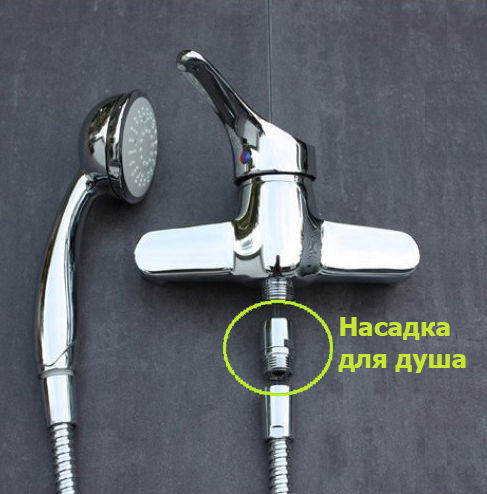
Number 8. Additional functions
In stores you can find nozzles that will not only save water, but also perform a number of additional, useful or simply fun features. Pay attention to the following options:
- backlit nozzle. LEDs are built into it, which can be switched in turn or give a certain shade depending on the temperature of the water. Usually remove cold water, take off the warm water - green, hot - red, but variations are possible. The main thing is that such a play of light will cost you absolutely free: the energy for powering the LEDs is generated by a miniature generator during the passage of a stream of water. The function of saving water is preserved;
- filter nozzle intended, as a rule, only for cold water. It is equipped with grids, a magnetic-carbon cartridge and an ion-exchange filter.This nozzle cleans at a fairly high level, but it will have to be changed often - once every 4-6 months;
- touch nozzleIn addition to reducing water consumption, it signals that you have raised your hands to the faucet. The flow of water is emitted instantly and stops as soon as you remove your hands from under the screen, and this is an additional savings. Such faucets are often placed in public places;
- baby nozzles performed in the form of animals and fairy-tale characters, some products can not only save, but also disinfect water. With such a nozzle, performing daily hygiene procedures will become a fun activity for the child, which means that washing and brushing your teeth will become a habit faster.

No. 9. The best manufacturers of water-saving nozzles
Quality is heavily dependent on the manufacturer. To date, the products of the following companies have shown themselves best of all:
- Oras - A company from Finland, which specializes in the production of faucets, watering cans and other accessories for plumbing. Since its foundation, it has sought to make products as economical as possible, and now has a wide range of nozzles made of ceramics and brass.
- Grohe - German brand following the highest quality standards. Their equipment is tested in harsh conditions, so low-quality models are rejected even before they hit the shelves.
- Timo - known for its non-standard products of many shapes and colors, perfectly suitable for any faucets. In addition, Timo issues a five-year warranty on every product released.
- Jacob delafon - A well-known French company, whose nozzles differ in a long period of operation (from 10 years). However, their cost is also higher than that of competitors - the average price fluctuates around $ 11.
Regardless of which brand’s products are in front of you, it does not hinder to evaluate the build quality before buying. Also note that some imported samples are poorly suited to work in domestic plumbing systems with a high salt content in water. Operating conditions should be written in the accompanying documentation.
No. 10. Care for the water-saving nozzle
To install a nozzle is the simplest thing even for a person who is very, very far from the world of plumbing. The whole process is reminiscent of screwing a cap onto a plastic bottle. After the nozzle is installed, turn on the water and see if it leaks. If drops of water are noticeable on the sides, then try to tighten the nozzle a little harder, but proceed carefully so as not to damage the thread.
Over time, the nozzle may become dirty, covered with water stone, and the gasket may become thinner. Do not forget to sometimes unscrew the nozzle and assess the condition of the mesh, cylinder and gasket. The latter may need to be replaced, and clogged nets can be cleaned with a special tool with a brush.


